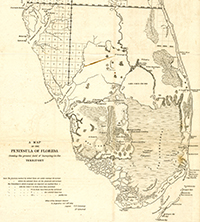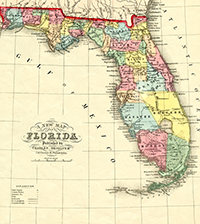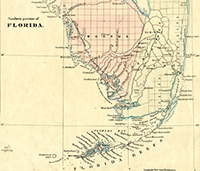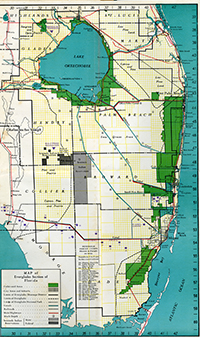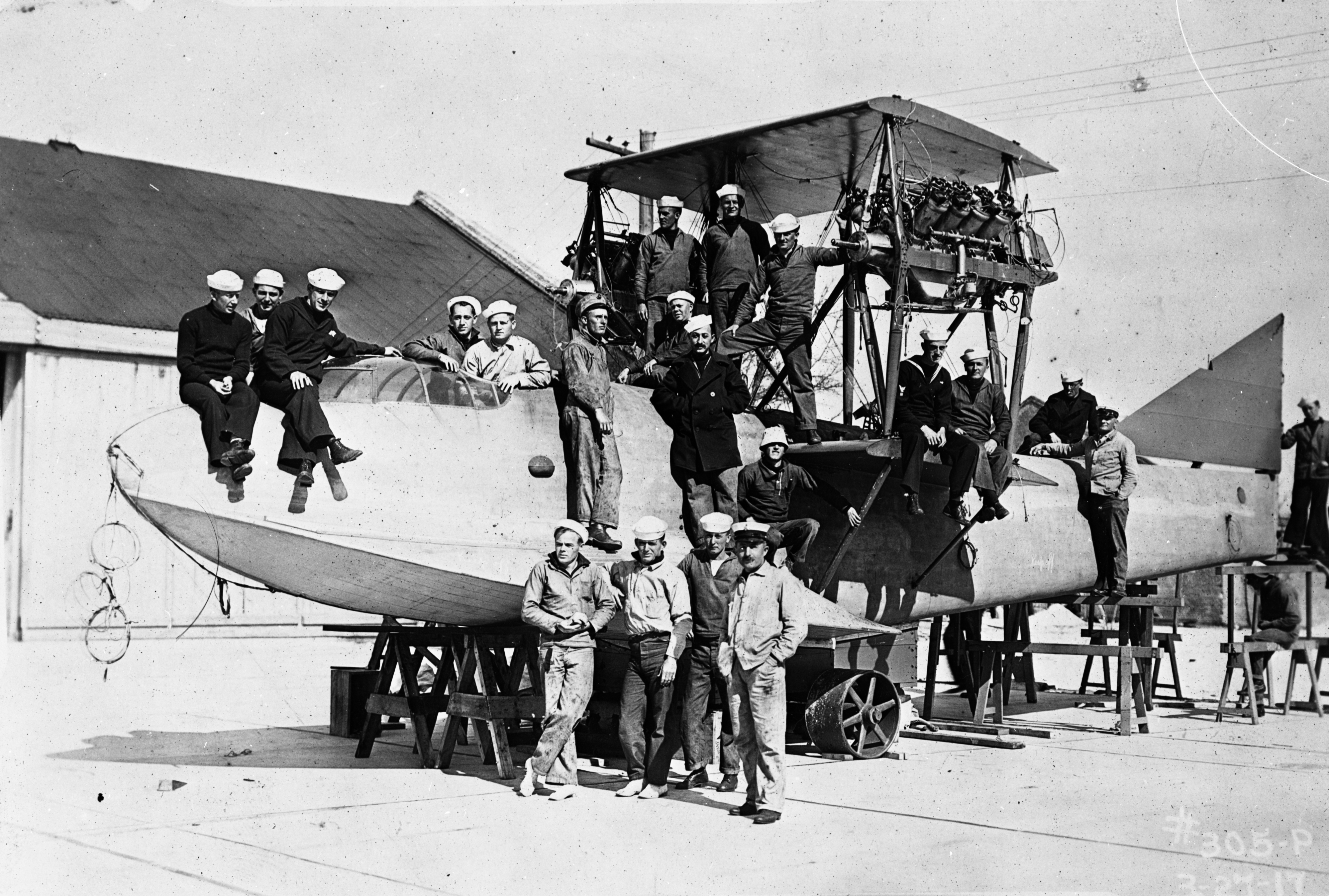The Florida Seminoles
Lesson Plans
Aftermath of the Seminole Wars
SS.8.A.4.4: Discuss the impact of westward expansion on cultural practices and migration patterns of Native American and African slave populations.
SS.8.A.4.17: Examine key events and peoples in Florida history as each impacts this era of American history.
SS.8.A.4.18: Examine the experiences and perspectives of different ethnic, national, and religious groups in Florida, explaining their contributions to Florida's and America's society and culture during the Territorial Period.
Resources:
(Slide One)
This lesson plan discusses the aftermath of the Seminole Wars.
(Slide Two)
The resources for this lesson plan are an 1844 surveyor’s map of Florida, (Slide Three) an 1859 map of Florida by the firm of Charles Desilver, (Slide Four) an 1873 map of Florida by Asher Adams, and (Slide Five) a 1940 map of Seminole camps created by the Works Progress Administration (WPA).
(Slide Six)
The Seminole Wars spanned more than 40 years. In that time, Florida became a territory of the United States and in 1845 the 27th state.
(Slide Seven)
When fighting between Americans and Seminoles first occurred in 1812, European settlement in Florida was limited to St. Augustine and Pensacola.
(Slide Eight)
After the Creek War of 1813-14, Creek refugees fled into Florida. These refugees, known as Red Sticks, combined with the Seminoles, made up the majority of Florida’s population in the early 1800s.
The American desire to obtain Florida led directly to the series of conflicts known as the Seminole Wars. It was through the Seminole Wars that Florida became part of the United States.
(Slide Nine)
The influence of the Seminole Wars is evident today throughout Florida, especially in its place names.
(Slide Ten)
The Florida landscape is dotted with places named for generals, like Andrew Jackson, Thomas Sidney Jesup, and Zachary Taylor; (Slide Eleven) for Seminole leaders like Osceola and Micanopy; and (Slide Twelve) with Muscogee language words like Okeechobee, Tallahassee, and Caloosahatchee.
(Slide Thirteen)
Many modern Florida cities owe their early settlement to the era of the Seminole Wars, such as Fort Lauderdale, Fort Myers, Fort Brooke (now Tampa), and Fort Dallas (now Miami).
The removal of the vast majority of Seminoles and their Black Seminole allies from Florida also brought about changes in the natural, social, and economic history of the state.
Planters moved onto Seminole lands and brought with them large numbers of African-American slaves.
(Slide Fourteen)
For the Seminoles, the long period of warfare resulted in trauma and displacement. The Seminole Wars forced the Seminoles to leave their farms and cattle herds in North Florida and move to a land covered by water, the Everglades.
(Slide Fifteen)
The Seminoles adapted their way of life in order to live in South Florida. The 200 or so Seminoles who remained in Florida after the Seminole Wars learned to build new types of houses, hunt new animals, eat new foods, and find new sources of income.
(Slide Sixteen)
Today, many members of the Seminole Tribe of Florida and the Miccosukee Tribe of Indians of Florida live on federal reservations in South Florida.

 Listen: The World Program
Listen: The World Program